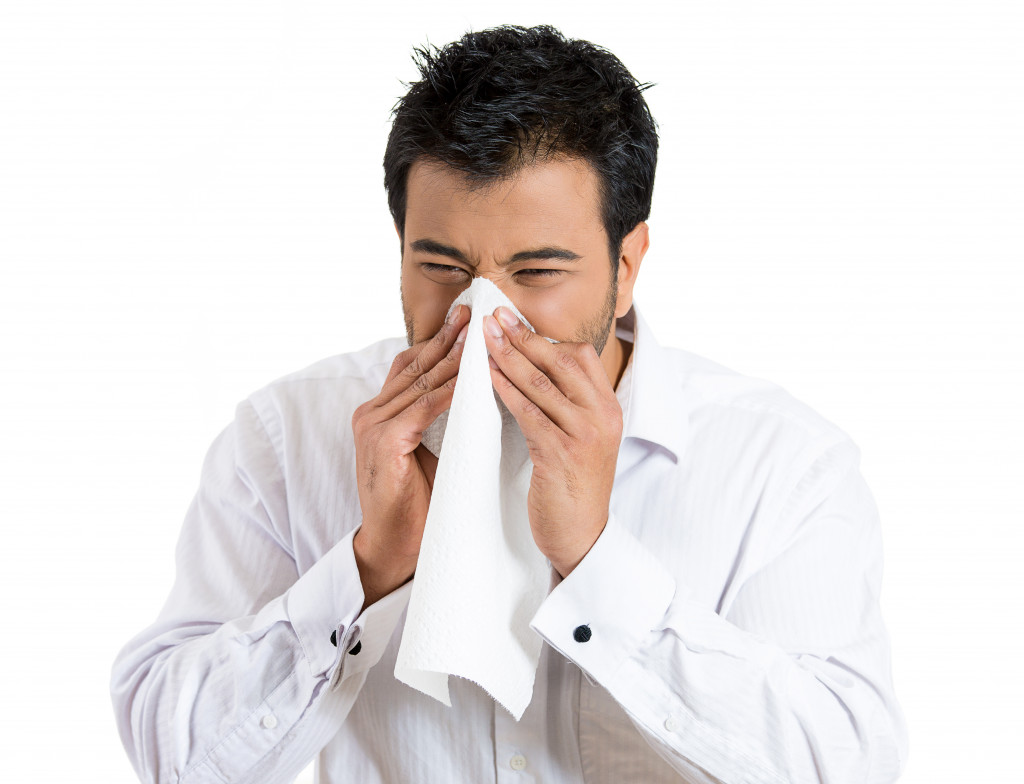- Poor air quality in the workplace can lead to various health issues, such as coughing, wheezing, shortness of breath, allergic reactions, and asthma.
- Causes of poor air quality include inadequate ventilation, chemical pollutants, poor cleaning practices, and lack of greenery.
- Solutions to improve indoor air quality include proper ventilation, air filtration, regular maintenance, and the introduction of plants.
- Investing in indoor air quality is essential for improved employee health and productivity.
Air quality plays a significant role in the health and well-being of individuals, particularly in workplaces where people spend a considerable amount of time. Poor indoor air quality at the workplace can lead to various health issues and affect employees’ productivity and morale.
This then has a ripple effect on the company itself, as it can lead to higher absenteeism and an overall decline in performance.
What is Poor Air Quality?
Poor air quality is defined as the air that contains a higher-than-normal concentration of pollutants and irritants, such as dust particles, fumes, gases, and other contaminants. These can be caused by activities such as cleaning and building maintenance; office equipment like photocopiers and printers; heating systems; inadequate ventilation; or chemicals used in the workplace.
Health Impacts of Poor Air Quality
Air pollution is a well-known hazard to our health, but did you know that air quality inside the workplace can be just as bad? This is a serious concern, as many of us spend significant time exposed to various environmental factors at work. Poor air quality in the workplace can significantly impact your health, leading to a range of short-term and long-term health problems.
Respiratory Problems
Poor air quality in the workplace can lead to various respiratory problems, such as coughing, wheezing, shortness of breath, and asthma. The most common cause of these respiratory problems is exposure to airborne pollutants such as dust, chemicals, and gases.
Allergic Reactions

Poor air quality in the workplace can also trigger allergic reactions in some individuals. This happens when the immune system overreacts to the allergens in the air, such as dust, mold, or pollen. Symptoms of allergic reactions can vary but commonly include sneezing, runny or stuffy nose, itchy eyes, and skin rashes.
Causes of Poor Air Quality in the Workplace
There are many causes of poor air quality in the workplace. Some of these include:
Poor Ventilation
One of the leading causes of poor air quality in the workplace is inadequate or insufficient ventilation. If the workplace doesn’t have adequate ventilation, the air becomes stale, and pollutants like carbon dioxide, dust, and chemicals accumulate, leading to headaches, fatigue, and other health issues.
To improve indoor air quality in the workplace, it is essential to ensure that the HVAC system is well-maintained and has adequate air filtration. If your HVAC system is getting old, consider hiring commercial HVAC installation services to improve the air quality. These experts can help you select the best system and provide maintenance services to ensure that it is running effectively.
Chemical Pollutants
Another significant cause of poor air quality in the workplace is the presence of chemical pollutants. Industries that use chemicals, such as manufacturing and printing, tend to have high levels of pollutants in the air, which can cause respiratory issues and skin irritation.
To reduce chemical pollutants, workplaces must implement proper ventilation systems, ensure chemical storage areas are well-ventilated, and switch to safer chemicals and cleaning products.
Poor Cleaning Practices
Poor cleaning practices are another leading cause of poor air quality in the workplace. Dust, mold spores, and other pollutants will accumulate in buildings’ nooks and crannies unless proper cleaning practices are implemented.
Regular cleaning practices can significantly reduce the buildup of pollutants and help to maintain the pristine air quality in the workplace. It is necessary to keep all surfaces clean and dust-free, maintain equipment well-maintained, and use non-toxic cleaning products.
Increase Greenery

One solution for improving workplace indoor air quality is adding more greenery. Research shows that plants can purify the air by removing VOCs and other pollutants. Plant options include rubber plants, snake plants, bamboo palms, and spider plants, which are easy to maintain and can thrive in indoor spaces with low light.
Regular Maintenance
Routine maintenance is crucial to ensure excellent air quality in the workplace. A well-maintained HVAC system can effectively exchange indoor and outdoor air and filter out pollutants. Filters should be changed frequently, and air ducts should be cleaned and inspected regularly.
In addition, it is essential to inspect ventilation systems regularly, repair any leaks or blockages, and check for signs of mold.
The Bottom Line
In conclusion, poor indoor air quality in the workplace can lead to various health problems and reduced productivity. It’s imperative to pinpoint the causes of poor air quality in the workplace and implement solutions to improve it. Solutions such as proper washing practices, regular maintenance, adequate ventilation, air purification, and greenery can help improve indoor air quality, enhancing employees’ health and well-being. Investing in indoor air quality is crucial to ensure that the workplace is optimized for productivity and employee health.




